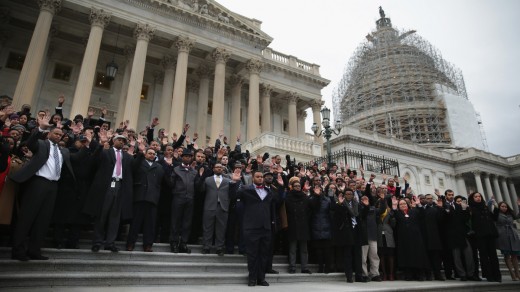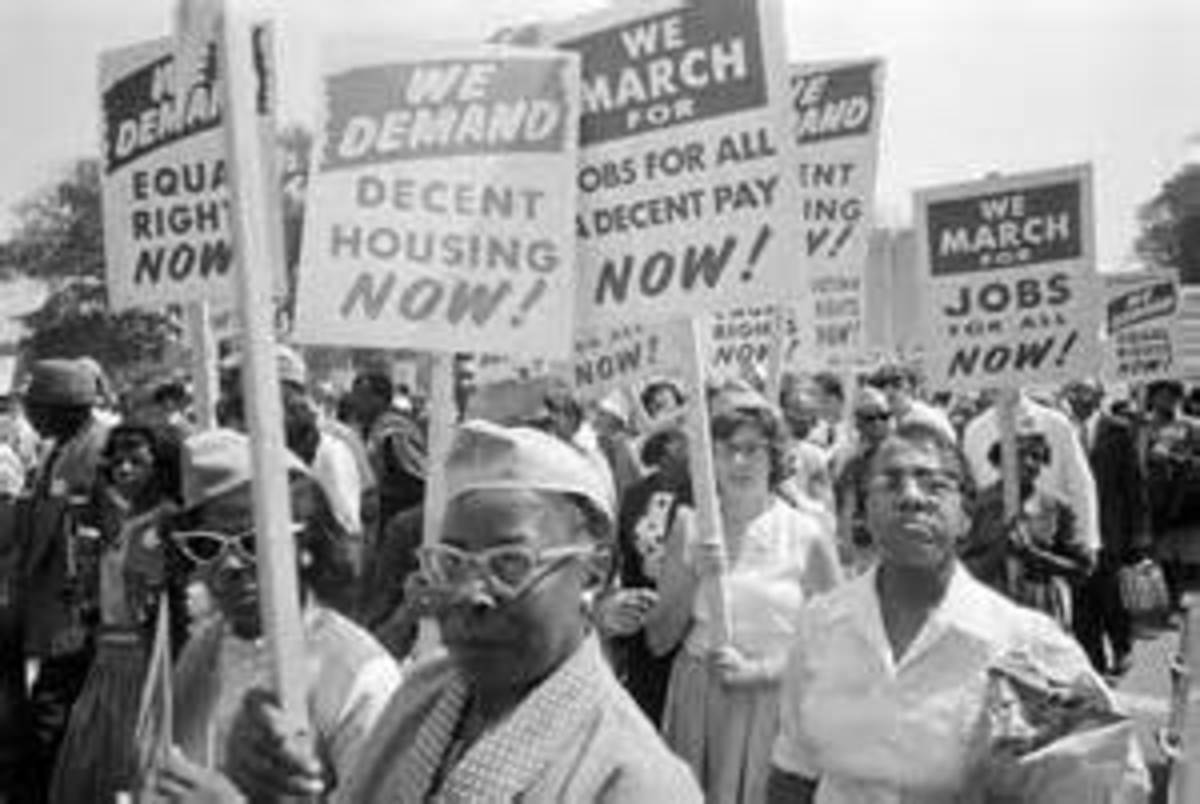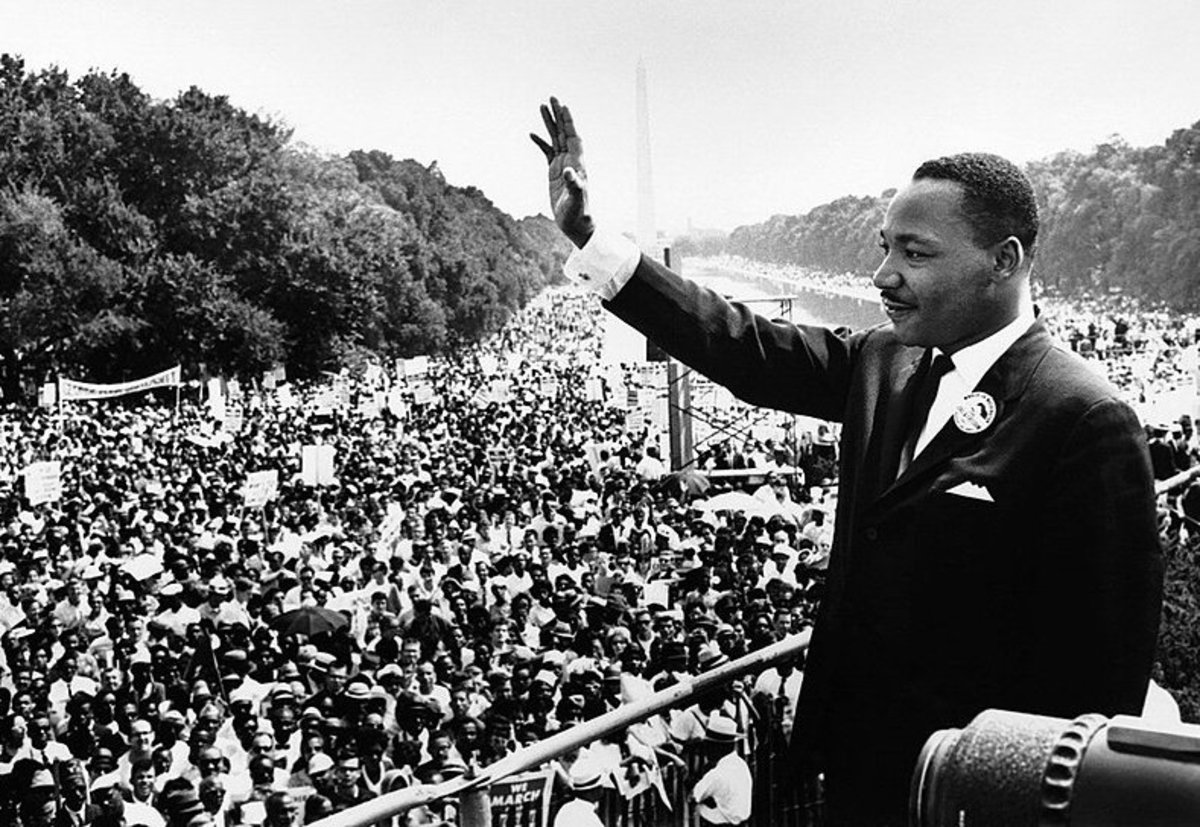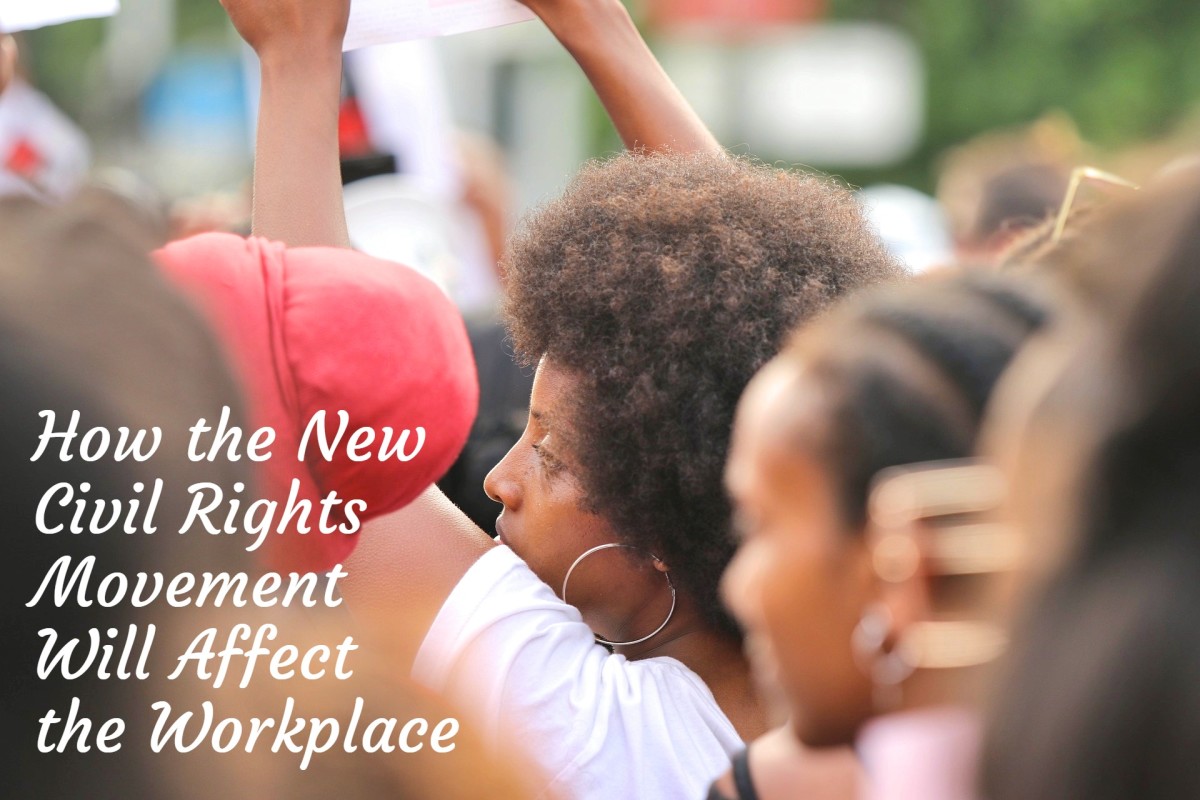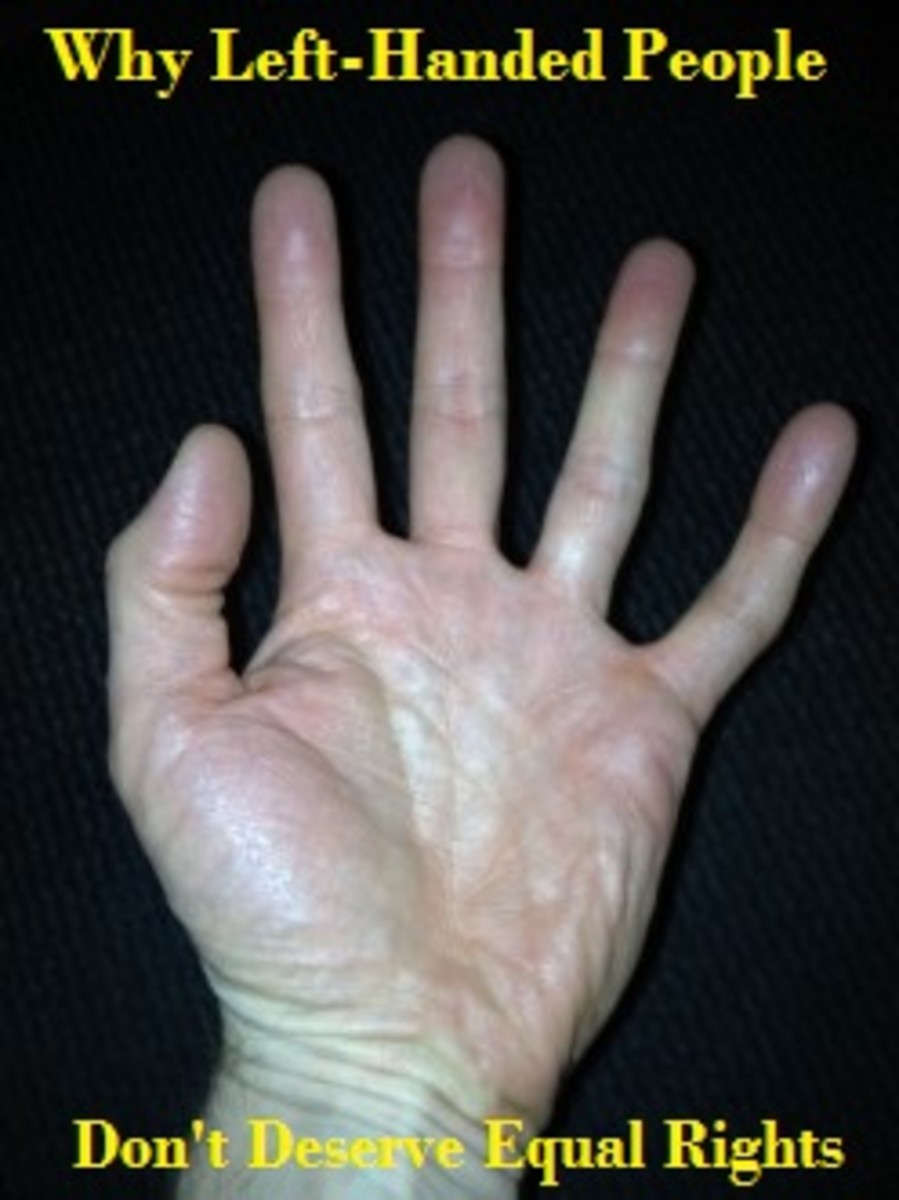Civil Right's Demonstrations- Social Change Movements that Effected the World
Women's Sufferage: March on Washington

Demonstrations from the 1840's to 2015
Social movements are groups of organizations joining an action that can change the unjust existence of certain parts of society. While a large amount of these organizations are formed to change under constitutional reasoning, not each movement is. Yet, movements such as the 1900’s Women Suffrage Movement, and the 1960’s Civil Rights Movement both involved protesting under the First Amendment to allow equal rights for separate minority groups. Throughout the last decade another wave of protesting has spread around the world. It includes protesting for political reasoning, and gathering of people who desire to make an awareness about corporate corruption surrounding economical fairness.
In both of the Women’s Suffrage Movement and the Civil Right Movement “institutional discrimination” lead to the gatherings of the two groups. Being that the minority groups of Black and Female Americans were not given the same privileges of the other white, male Americans. Being allowed to participate in public uses of democracy to demonstrate the right to vote, own property, and share the use of public equally. Public marches, demonstrations, and sit –ins lead to the constitution being changed and common laws to be accepted to reflect the social change.
The social movement which began in our generation started in a Middle Eastern country, and was labeled ”the Arab Spring”. This movement encouraged additional amount of demonstrators worldwide to known as Occupy Wall Street. While the Occupy Movement began with official “Sleep is Protest” sites with generation x’ers sleeping all day and night in tents with signs posted in front. What would follow it would be more demonstrators than ever representing the oppression against violence from the police against black males. Each three series of country-wide protests reflected the nature of the need of political change to protect the lives of others.
The Women’s Suffrage Movement 1848 to 1920
While the Women’s Suffrage movement was the cause of the United States Constitution changing in the 1920’s, the first meetings and the true begin of the movement was at Seneca Falls on July 19th and 20th in 1848. At this Women’s Right’s Convention the leaders of the movement: James Mott of Philadelphia; Elizabeth Cady Stanton; and Susan B. Anthony were represented on their purpose of the movement. The expression in the Declaration of Sentiments shares the belief that while the founding father Thomas Jefferson wrote in the Declaration of Independence “that all man is created equal”, nowhere did it state that women were also equal. Without the right to vote, to right to own property, or exist with the right to work as men do – women could not do anything more than be housewives.
Before the constitution changed in 1920, many other members of the Women’s Rights Movement began to progress for social change to womanhood. The right to vote was a large need among the movement’s members, but so was basic equal existence. Women getting an education, being able to do more than teach school in authoring books was one important academic focus. Other issues to women related to the keeping of land over rights to property and being left the responsibilities after being widowed. Somehow, a women could not own her husband’s home even if she were widowed.
Many of the women and men who first joined the Women’s Suffrage Movement also had experience with Slave Rights. Thus the seeking of education rights and the antislavery movement seem to go together hand in hand. Not only in political circles were women not allowed to have a say in matters, but also in common areas of work as well. Women were at the start of trying to make a transition from being kept by a husband at home to being able to apart of the functioning society to interact with one another as men did.
On August 18, 1920 The United States Constitution was ratified, in effect, to state this:
Amendment XIX:
“The right of citizens of the United States shall not be denied or abridged by the United States or by any state on account of sex. Congress shall have power to enforce this article by appointment legislation.”(Heritage 2014)
This picture below shows a group of some 8,000 women who took to Capitol Hill just 7 years before the United States Constitution was changed. The day before the inauguration on Woodrow Wilson, the March on the Right to Vote would gather down Pennsylvania Ave. Leading the protesters was Alice Paul. A procession on horseback continued down the avenue with women and men attempting to raise awareness that women could not vote, this was wrong. Some of these protesters, including Alice Paul, were later arrested. It took protesting to allow women the privilege of the right to vote.
Civil Rights Movement 1950s to 1960s
In the modern Civil Rights Act, protesters fought on many levels to make social change. One important topic for demonstrators was the need to end segregation in the public. As it was not only did black men and women not have the right to vote, they were not allowed to be in public with a certain part of the public labeled for “Whites Only” After the end of slavery, at the end of the Civil War in 1865, public remained to be separated until the beginning of the movement in the 1950s. One main focus of the movement was to use the proper channels, to be non-violent, and to hope for the equal rights of every black American.
The Civil Rights era was a troubled time. During this time the rights of black Americans were also meet with anti-war protesters, and a movement against the establishment not focused on separation or voting rights but conformity. The “Hippie” movement was aligned with the “anti-war” sit ins. Yet the legal battle to end separation had begun in some common communities around the country. Schools, buses, and lunch rooms were places that demonstrators would begin the effort to fight against signs that guided segregation. For a black person to be in a courthouse would be considered a crime, but only by a white sheriff.
In the mid of the movement, one important leader, Martin Luther King Jr. began to led marches. His most famous march would be the March on Jobs, led in Washington D.C. This assembly of protesters joined from religious communities to state that every black man and women deserved the right to be treated, to work, and to be a part of the community equally. At this march his “I have a dream speech” rang into the consciousness of generations. Later on in this decade Mr. King would be victim to the oppression of violence himself, just as was our president John F. Kennedy. The price paid by our leaders in the 1960’s movement was to end an unjust society, and how it was labeled.
While it took much violence, not just the lives of those listed above, but endless amounts of protesters and demonstrators across the nation had lost their lives. Marches across Selma, Alabama in March of 1965 had been deadly and caused much injury by police brutality. This march was intended to bring about the social change that was answered and brought into action by the then president, Lyndon B. Johnson one week later in 1965. The Voting Rights Act was signed into law to make effect that every American could have the right to vote, regardless of their skin color.
The Arab Spring and Occupy Wall Street 2009 to 2012
The Arab Spring is the term labeled to the social movement of college students who began a worldwide protest. In Tehran Square in 2009, college students gathered to demonstrate the need of reasonable living standards. While the effort of this movement continued, it spread across other Middle Eastern countries to have a political focus to how countries like Egypt and others needed to change their leadership.
According to a Wikipedia article about the Arab Spring:
“Protesters considered to be inspiring by the Arab Spring have taken place on every inhabited continent, with varying degrees of success and prominence. On October 15th, 2011, the subsidiary “Occupy” and Indigents movement inspired protests in 950 cities and 82 countries.”-wikipedia, 2015
On Sept. 17th 2011 a group of demonstrators began to gather in Zuccotti Park that would start the Occupy Wall Street Movement. Protesters brought tents to stage their sleep in to bring awareness about the effects of conglomerate wealth and a system of managing money that has offset into debts and unjust actions for other Americans. This followed a 300,000 person protest that was began in Tel Aviv on Sept. 3rd, 2011.
The European movement for social change followed in the year of 2012. On November 17th, 2011 in over 26 countries across Europe demonstrators came out to show their needs. What was termed “Austerity”, in effect is the equivalent of American poverty, effects over 40% of persons living throughout Europe. This map below shows the cities and countries where protesters held demonstrations.
Continued Protesting 2014, 2015
While the main effort of the Occupy Movement has been put into the past. The efforts of demonstrators and protesters has continued. In 2014, the deaths of Mike Brown, and Eric Garner who were both in police custody, filmed, and died due to brutality led to nation-wide protesting. The filmed attacks on Mike Brown and Eric Garner were both connected to the police reacting on suspicions of “Racial Profiling”. The officers who were responsible for the deaths were white, and Mr. Brown and Mr. Garner were both black. While the slogans of the rallies and marches were led by some of the country’s most prominent rights leaders, the terms” Black Lives Matter”, was coined.
Around the country, for the first time, protesters were being broadcast on national TV. The dislike the mainstream media held over the Occupy movement, was finally gone. Now America would know that Al Sharpton, and even people who work in the United States Capital building would be out to put their hands up. This was the chant of the protest for Mike Brown, who witnesses say he held up his hands and stated for police not to shoot him. The “Hands up Don’t Shoot” chant carried across the nation.
The civil rights of others have made their back into mainstream media in America and around the world. What started out as an issue for minorities in the 1800s continues to this day. Brutality, force and oppression against the “other” is a state of mind that “white privilege” has afforded. The Women’s Suffrage Movement, the Civil Rights Movement, Occupy Wall Street Movement, and the Black Lives Matter Movement all in effect are speaking to the public about equal rights. The right to be equal and to be protected under law is an ongoing fight.
Wall Street reform has not happened. Yet, the spawn of continued Black Lives Matter protests did bring about a protection of police to be required to wear body cameras. Change is coming. The awareness of what the other is out there. The pubic n the movements are bringing awareness to what is wrong. How others have been struggling for basic needs, and certain protections. America is still a work in progress.
Sources Cited:
Forte, F. David., Spalding, Mathew. The Heritage Guide to the Constitution. Fully revised 2nd Edition. The Constitution of the United States. Amendment XIX, Section 4(p.45) 2014. The Heritage Foundation.1st pub. 2004.2nd pub. 2014. Washington D.C.
Arab Spring. Wikipedia.org www.en.wikipedia.org/wiki/Impact_of_the_Arab_Spring 28 July. Web.
March on Jobs August 1963, Martin Luther King Jr.

Tel Aviv Demonstrators in 2011 - Arab Spring
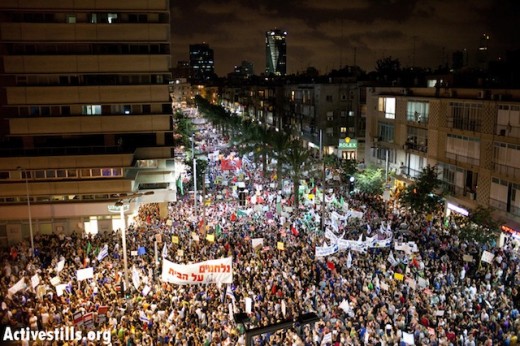
European Austerity Nov. 2011 - 26 Countries map
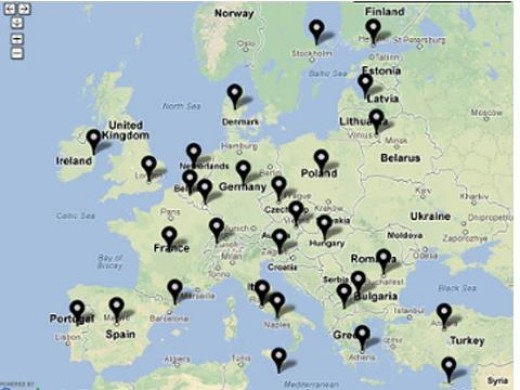
European Austerity Demonstrations shown by region- Nov. 14, 2011
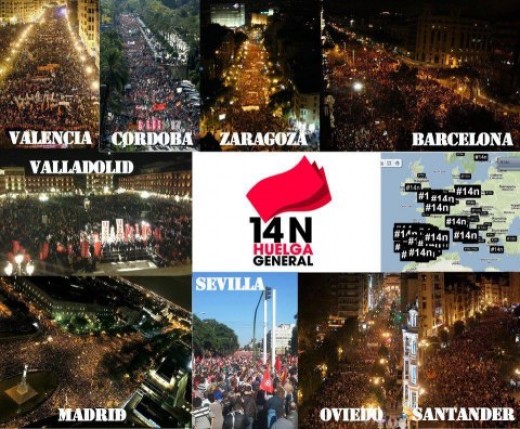
Hands Up Don't Shoot at U.S. Capital - 2014
